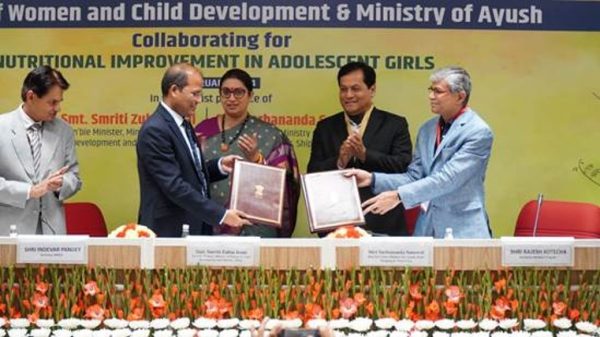Aunt Flo shows up every month, coming along with a lot of pain, and discomfort. Although it’s a natural process that signifies a healthy reproductive system, the cramps that come with it can feel like a punishment. It’s enough to make you want to curl up in bed and hibernate until it’s all over. But have you wondered what devilish forces conspire these scenes? For starters, your hormones. These prostaglandins serve an important function in signaling the uterus to contract and shed its lining, but when they are overactive, they may cause severe cramping and pain.
Uterine fibroids can turn monthly menstruation into a monthly nightmare by increasing both the volume of bleeding and the intensity of period pain. The discomfort is caused by the uterus contracting (cramping) throughout the menstrual cycle to remove the huge blood clots that often occur from heavy bleeding.
Well, PCOD or PCOS can also be added to the list. But dear readers. In this post, we will explore ways to reduce period pain at home.
Tips to Reduce Period Pain
Period Pain Relief Gadgets
The world of period pain relief gadgets opens the options on how to stop period pain immediately at home. Wearable Transcutaneous Electrical Nerve Stimulation (TENS) devices provide an additional degree of pain reduction for those who would rather not use their hands for the procedure. These clever tools hit the spot where you’re hurting the most by stimulating the muscles and nerves in your abdominal region with mild electrical pulses. It’s as if you had a personal masseuse at the ready, who could ease your pain at the touch of a button.
We must not overlook the efficacy of vibration treatment either. Massage tools that use mild vibrations to ease muscular tension and increase blood flow range from portable massage wands to vibrating balls. Imagine a relaxing day at the spa for your uterus, without the high cost or uncomfortable small conversation.
Body Massage
Different massage techniques can be applied to target certain parts of the body and reduce menstruation discomfort. It entails massaging the belly and lower back with heated oil. The massage helps to relax the muscles and relieves stress in the body. It also improves blood circulation in the region, which helps to relieve pain and discomfort.
The compression massage method includes applying pressure to the abdomen using the hands, fingers, or a massage instrument. This pressure reduces spasms and relaxes tense muscles. Compression massage is also proven to boost circulation and relieve inflammation.
Compression massage can be performed using the hands and fingers or a massage instrument. The massage therapist will apply pressure to the abdomen region in a circular motion with their palms and fingertips.
Get into Comfortable Body Positions
As a haven from the constant barrage of period pain, women have long sought solace in the calming embrace of familiar body postures. But how precisely can these postures reduce our pain, and what is it about them that makes them so effective?
Whether it’s nestling into a fetal position like a snug little burrito or just sleeping on your side with a cushion between your knees, adopting a posture that supports and cradles your body can do wonders for releasing muscular tension and fostering relaxation.
Restricting blood supply to the pelvic area during menstruation can make period pain worse and make it last longer. To alleviate your symptoms, try lying down with your legs raised or sitting with your legs crossed while gently rocking back and forth. These postures promote circulation and can help boost blood flow to the plagued region.
Get Control Over Period Cravings
During menstruation, cravings for sugary foods and refined carbs are common, and they can contribute to dangerous swings in blood sugar levels. Inflammation and hormone imbalances, brought on by these changes, can make period pain much worse. Stabilizing blood sugar levels and reducing the inflammatory response can reduce cramps and pain. Opting for nutrient-dense, balanced meals, and snacks is a better bet.
Eating meals that are heavy in sugar and processed fats, for example, can throw off your hormone balance and make your period symptoms worse. You can help maintain hormonal balance and decrease inflammation by eating foods that are high in important minerals, such as magnesium, antioxidants, and omega-3 fatty acids. Eating more berries, nuts, seeds, and leafy greens can help regulate your hormones and reduce period discomfort.
Add Herbs To Your Diet
As we are answering your question about how to reduce period pain at home, herbs can be a natural and effective way. Turmeric, ginger, and cinnamon are a few examples of herbs that contain bioactive chemicals that could ease pain and inflammation. You can reduce inflammation and period discomfort by using these herbs in your cooking or drinking their teas.
For centuries, people have turned to herbs like black cohosh, chasteberry (Vitex), and dong quai to help maintain a healthy hormonal balance and control menstruation. By supporting more balanced hormone levels and lowering the intensity of menstruation symptoms, these herbs can help ease period discomfort.
You can decrease the severity of period cramps and spasms by using herbs that calm the muscles, such as chamomile, valerian root, and cramp bark. You can ease period cramps and relax your muscles by drinking herbal teas made with these calming plants or by taking them in supplement form.
Stay Hydrated
Feelings of swelling (stomach or otherwise) or weight gain are common in the days leading up to and maybe even throughout a woman’s menstrual cycle. This is because you’re bloated because of water retention. Even though it’s a typical and frequent period symptom, bloating can be painful and increase the severity of cramps.
Contrary to what you would expect, drinking water often throughout the day can help lessen the discomfort and bloating that comes with your period. It would be helpful to have a water bottle on hand and to fill it up many times during the day. Aim for eight 8-ounce glasses of water daily, however the exact amount can vary from person to person. You can relax your muscles and improve blood circulation just by sipping hot water. Uterine contractions can induce cramps, but this can soothe them.
Heat Pad to the Rescue
Placing a hot water bottle or heating pad against the abdomen can help to relax and ease cramps. Heat relaxes the uterine muscle and those surrounding it, perhaps reducing cramping and pain.
To relieve back discomfort, a person can apply a heating pad to their lower back. Another alternative is to take a warm bath, which can help relax the muscles in your belly, back, and legs.
What if it still doesn’t work?
You can always turn to medication if these natural cures don’t help your symptoms. But keep in mind that “taking the easy road” and depending just on painkillers may not be the greatest strategy in the end. Although they provide short-term comfort, abusing these treatments might result in problems or dependence concerns down the line. Since natural therapies and lifestyle modifications can provide long-term comfort without the risks of excessive pharmaceutical usage, they should be considered first.
Conclusion/ A Farewell for your Period Pain
It’s time to look into more permanent solutions now that you’ve learned how to reduce period pain at home with natural treatments and mindful techniques. Welme offers a period pain relief gadget, which is a proven and established remedy. The purpose of this safe, clinically tested, and scientifically proven gadget is to provide support, refuge, and care on those unpleasant period days.
You can obtain targeted pain relief that goes along with your holistic approach to period health by adding Welme to your menstrual care regimen. Welme is an innovative and simple device that can relieve period discomfort effectively and conveniently, without the need for drugs or invasive treatments.
Reference link:
https://timesofindia.indiatimes.com/life-style/health-fitness/health-news/menstrual-cramps-10-home-remedies-that-guarantee-immediate-relief/photostory/91964371.cms
https://www.medicalnewstoday.com/articles/324484
https://www.houstonmethodist.org/blog/articles/2021/sep/menstrual-cramps-5-tips-for-getting-relief-from-period-pain/
https://www.felixhospital.com/blogs/10-safe-and-effective-home-remedies-for-period-cramps
https://www.forbes.com/health/womens-health/how-to-relieve-period-cramps/
https://www.healthline.com/health/womens-health/menstrual-cramp-remedies
https://www.healthpartners.com/blog/13-ways-to-stop-period-pain/
https://www.healthline.com/health/womens-health/how-to-get-rid-of-cramps
Photo by Yuris Alhumaydy on Unsplash (Free for commercial use)








